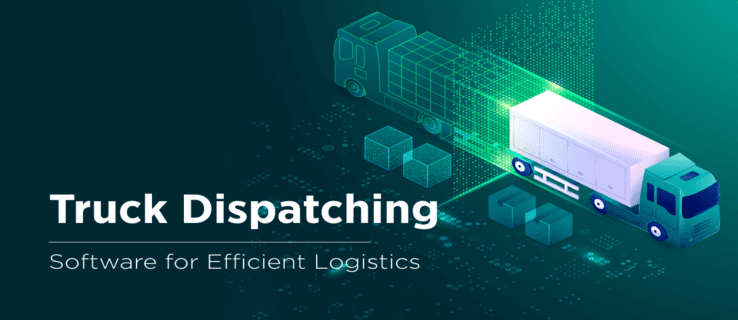In the quiet dawn hours across countless towns and cities, a network of trucks rumbles to life, setting in motion the day’s relentless dance of commerce and logistics.
These vehicles, large and small, are the unsung heroes of modern civilization, the cogs in the ever-turning wheel of the global economy, responsible for the timely delivery of everything from basic essentials to luxury items.
At the heart of this intricate ballet, coordinating each move with precision sits the trucking dispatch industry.

It is the mastermind behind each shipment, ensuring that this vast network of transport operates smoothly, connecting businesses to markets, and consumers to products.
However, the industry’s landscape is shifting, driven by a confluence of factors that are rewriting the rules of the game.
Regulatory pressures are mounting, environmental concerns are reshaping operational standards, and a global pandemic has tested every ounce of the industry’s resilience and adaptability.
Amidst these challenges, there is a silver lining, heralded by technological innovations.
These advances, especially in digital tools and software, are redefining efficiency and productivity standards, offering solutions that promise to modernize the sector.
The trucking world is poised on the brink of a digital revolution, where data-driven decision-making and automation are not just buzzwords but essentials for survival and growth.
As we delve into the world of trucking dispatch in this new era, we find an industry grappling with its traditional role while transitioning into a future fraught with both challenges and opportunities.
It’s a future where success hinges on the ability to adapt and adapt; where keen insights, informed decisions, and forward-thinking strategies are paramount.
This transformative phase marks a period of unparalleled importance for technology, particularly trucking dispatch software, as the beacon leading the charge toward a more efficient and sustainable operational framework.
Understanding this evolution is key for anyone directly involved in the industry, from fleet managers to logistics entrepreneurs, as they navigate through these unprecedented times.
Evolving Challenges in the Trucking Dispatch Industry
Trucking dispatch has always been a dynamic puzzle, a complex interplay of logistics, human resources, and real-time decision-making. Today, this complexity is amplified by several factors.
- Regulatory Compliance: Dispatchers must navigate a maze of evolving regulations, including environmental mandates, Hours of Service (HOS) laws, and safety standards. These regulations, while ensuring safety and sustainability, require meticulous logging and reporting, placing additional burdens on dispatchers.
- Driver Shortage and Retention: The industry is facing a significant driver shortage, exacerbated by an aging workforce. Dispatchers are tasked with optimizing schedules, routes, and loads, ensuring driver satisfaction and retention by respecting preferences and maximizing earning potential without infringing on mandated rest periods.
- Economic Fluctuations: The economic landscape, impacted by factors like the COVID-19 pandemic, fluctuating fuel prices, and changes in import-export policies, remains unpredictable. Dispatchers need to maintain operational efficiency and profitability in an environment of constant change.
The Rise of Trucking Dispatch Software
In the face of these challenges, technology has emerged as a beacon of innovation, particularly in the form of trucking dispatch software. This specialized software is revolutionizing the industry with features designed for the digital age.
- Real-Time Tracking and Updates: Modern trucking dispatch solutions offer GPS tracking capabilities, providing dispatchers with real-time updates on each truck’s location. This feature allows for more accurate scheduling, improved response times for issues on the road, and enhanced communication with clients awaiting deliveries even when you are traveling.
- Automated Scheduling and Optimization: Using advanced algorithms, dispatch software can automate the scheduling process, matching loads with drivers based on availability, location, and vehicle capacity. It optimizes routes considering current traffic conditions, weather, and fuel consumption, significantly enhancing overall efficiency.
- Compliance Management: Dispatch software can seamlessly integrate regulatory compliance into its functionality. It manages driver logs, ensuring adherence to HOS regulations, generates reports for environmental standards, and alerts dispatchers to potential compliance violations, preventing costly fines and delays.
- Enhanced Communication: By providing a unified platform for communication, dispatch software bridges the gap between dispatchers, drivers, and customers. It facilitates the swift exchange of essential information, from route changes to delivery confirmations, streamlining operations, and improving customer service.
- Data Analytics and Reporting: Modern systems harness the power of data, offering analytics and reporting features. Dispatchers can track performance metrics, financials, and service quality, providing valuable insights for informed decision-making and strategic planning.
Leading Software Solutions
Several providers are at the forefront of dispatch software innovation, offering solutions tailored to various operational sizes and complexities.
These platforms stand out for their user-friendly interfaces, scalability, and dedicated support teams, making them suitable for different business needs.
The benefits of integrating these advanced systems are clear, from cost savings and increased efficiency to driver satisfaction and improved customer service.
However, the transition requires an investment in both time and capital, and companies should approach implementation with clear goals, staff training, and phased integration plans for best results.
Conclusion
The trucking dispatch industry stands at a crossroads of challenges and technological evolution.
The path forward is being shaped by innovative software solutions offering levels of efficiency, insight, and control that were unimaginable just a decade ago.
These tools are not just optional extras but fundamental components for any trucking business intending to remain competitive and profitable in a rapidly evolving market. They mitigate contemporary challenges, from compliance management to real-time logistical adjustments, reflecting the industry’s dynamic nature.
However, embracing these advancements goes beyond merely purchasing software; it involves a paradigm shift in operations and strategy.
Companies need to invest in training, fostering a culture open to technological adaptation, and exploring strategic partnerships that maximize the potential of these digital tools.
The future belongs to those who innovate, and in the world of trucking dispatch, the future is driven by technology.
As we brace for the industry’s digital transformation, the journey ahead, though laden with challenges, beams with the promise of infinite possibilities.